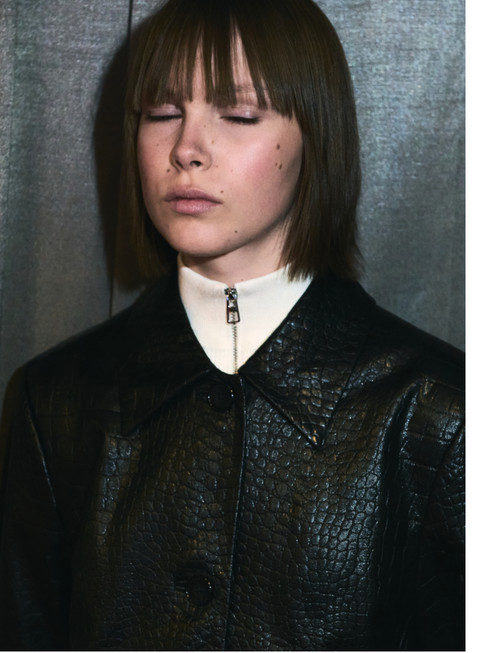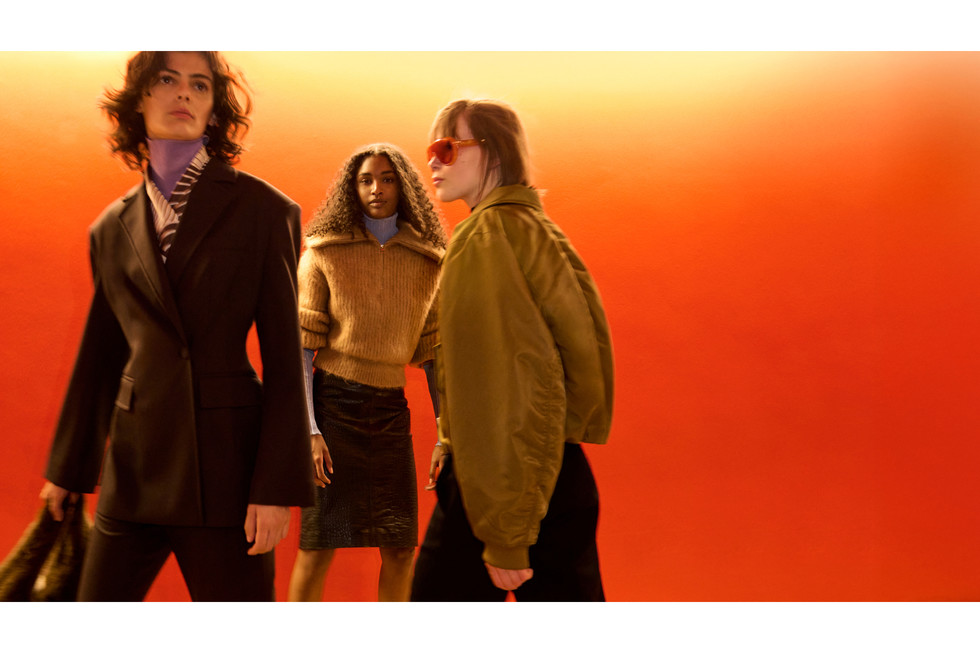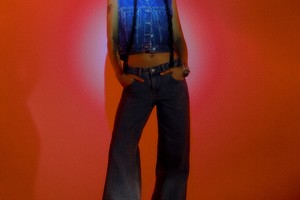Janae: What inspired you to start Selfi?
Celeste: Growing up, my sister and I used to draw on every surface we could find. Both my parents were in the fashion industry, so industry talk was always an essential part of the conversation at dinner. Along with that, I was really interested in art and started drawing from a young age, as well as customising existing old clothes. I think it definitely started early, and many of those moments led me to become a designer today.
J: What goals did you have in creating your first collection?
C: I saw a niche of creative women in industry who were not wearing office wear to work but attire that can blend from day to dinner, or for lack of a better word, creating more transient clothes. I was interested in the modern career women who have a love for travel, great food, and who appreciate art and design in Cape Town at the time.
J: When it comes to fabrics, what are the ones that you really enjoy using? And why?
C: With each collection, we strive to incorporate fabrics that are kinder to the environment. The fabrics we like to use are cotton twill, ramie linen, rayon linen, hemp, and sometimes silk. We examine the amount of water used in the production of our fabrics, considering whether it contributes to microfibre pollution or greenhouse gas emissions, and how long it will take to decompose after purchase. All these factors have led us to select the most eco-friendly plant-based fibers carefully.
J: What role does sustainability play in your brand?
C: The fashion industry produces a lot of waste season after season. Disposing of mock trials, samples, and fabrics that are no longer needed by design houses. With the dumping of these waste textiles, toxic chemicals are released into the environment and break down into the soil when they are buried. Every season, we donate all our mock trials and samples to St Anne's home for abused women and children in Woodstock, Cape Town, and Emmanuel Children's Day Care Centre in Atlantis. Here, the textiles we donate get repurposed and used for skill development through craft and sewing.
J: How do you approach functionality and creativity with your collections?
C: It's important to me to create clothes that are authentic but not intimidating or uncomfortable to wear. Clothes that are both durable and body-shaping are essential. We often redesign silhouettes season after season that fit well, and we will make slight changes in collar or pocket details
J: Could you tell me more about how you incorporate African culture and identity into your work?
C: Self-identity and culture are all about identity. In previous collections, we have drawn inspiration from indigenous tribes, such as the San people of South Africa, and explored the herbs and rituals they used for healing purposes. Weed colours and textures from these elements have been incorporated into our collections and lookbooks. We have also incorporated rock art female body silhouettes into knitwear pieces we have designed to celebrate the San people's body and the curvaceous nature of the South African female form. We have also had a dress called the Ostrich Egg dress, which was quilted to resemble an ostrich egg used by the San People for drinking.
J: What kind of woman or person do you have in mind when you design pieces for Selfi?
C: We design with the modern global woman who loves to travel, great food, and who appreciates art and design. She is self-aware, conscious, and is rooted in exploring herself, always striving to be the best version of herself.
J: Can you shed some light on your connection between your brand and the charities you work with?
C: Every season, we donate all our mock trials and samples to St Anne's home for abused women and children in Woodstock, Cape Town, and Emmanuel Children's Day Care Centre in Atlantis. Here, the textiles we donate get repurposed and used for skill development through craft and sewing.
J: What makes Selfi stand out in the South African fashion landscape?
C: It's always been important to me to create a band with a purpose rooted in self-empowerment. Clothes with a mission that can raise the vibration of my environment, may it be through the people who make the clothes, to the women who wear them, or how it affects the earth. It's all one chain; everything is connected. With this mindset, that is what makes us different.
J: What is next for Selfi?
C: I wish to do more collaborations with like-minded brands. Creating authentic experiences around fashion based on connection and high vibration experiences locally and internationally.























